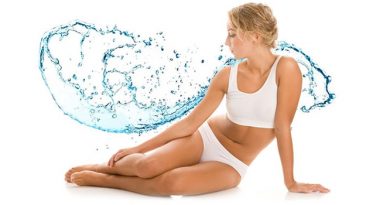Pilates and the core powerhouse
The term “core powerhouse” dates back to when Joseph Pilates created the Pilates movement. In today’s world of scientific advancements, this part of the body is referred to as the lumbo-pelvic hip complex. It is part of the stabilisation system of the body.
What is the core powerhouse?
Your core powerhouse is the centre of the body. When strengthened, it creates the foundation for all movement and fitness. Most people listen to the word “core” and they immediately only associate their core with their abdominal muscles.
However, in reality, your core is made up of many more muscles. The core powerhouse muscles:
- Begin at the bottom of your ribs,
- Snake down to the top of your hips, and
- Go all the way to the bottom of your pelvic bone.
The six significant muscles that make up the core powerhouse. These are:
- Transverse abdominis,
- Quadratus lumborum,
- Rotators,
- Diaphragm,
- Multifidus,
- Pelvic floor.
There are several different steps to activating our core powerhouse to prepare for movement:
- The first thing to think about is lacing the top of your ribs together and drawing your navel towards your spine. Take a deep lateral breath as this will activate your diaphragm and activate your abdominals.
- Now, lift your pelvic floor. Think of when you’re desperate to use the restroom and are holding it in. When you activate these muscles, you’re activating your core powerhouse.
People who are just beginning with Pilates need to learn how to activate the core powerhouse. They need to keep their whole body connected like a tight corset around their trunk.
A strong core powerhouse doesn’t necessarily equal a six-pack
Your core is about a lot more than just your abs. Your core powerhouse helps to facilitate movement. In addition, it provides a home for your inner organs and central nervous system. In other words, a strong core helps you to do just about everything.
Back pain is a typical side effect of having a weak core. When our abdominal muscles are weak, it’s often because our back muscles are overly strong.
Building core strength will assist in bringing balance to both sides of your body. Sitting at a desk daily doesn’t help. Not being attentive to how we’re sitting, and not engaging our core, can lead to issues such as compressed discs in our spine.
Many people make a mistake often of sitting for long periods with a tilted pelvis and an arched back. This is as opposed to sitting tall on their “sit bones”. (To locate where this is on your body, imagine the boney part of your bum that points straight down.)
To work your core while you’re sitting behind your desk at the office, sit on a stability ball rather than a chair. This because the sense of instability and the movement it creates forces your abdominals to stay engaged.
How to Use the Core Powerhouse in Pilates Practice
The core powerhouse allows us the energy, stability, strength and control so that we can move to the intermediate and advanced Pilates exercises. Developing the core powerhouse muscles in a balanced manner will advance you toward true fitness in the quickest possible way.
Put your Core Powerhouse to Work with these Tried and Tested Pilates Moves
20 Core Minutes of Pilates: This is an intermediate-level powerhouse workout. It is done with an exercise ball (there are other options if you don’t have one handy). It functions to strengthen the core stability muscles and the powerhouse using 10 workouts.
Level 2 Stretch and Strength Series: These 10 exercises build the strength of your abdominal muscles and they also function to stretch your back, your sides, the front of your body as well as your hamstrings.
Maintain the strength and suppleness of your core powerhouse. This is an intermediate-level powerhouse set of exercises.
Classical Pilates Mat Exercise Series: This series consists of the traditional first 10 mat exercises that were developed by Joseph Pilates. They were designed to challenge the powerhouse.
Having everything connected allows us to move with strength, stability and dynamic energy. Only when your core powerhouse if fully developed can you advance into the harder levels of Pilates. It’s with a strong powerhouse where you can progress to a high and consistent fitness level. Having a strong powerhouse will not only help overall strength but can benefit other things as well. Pilates can be great for rehabilitation purposes and is also scientifically proven to improve cognition.




